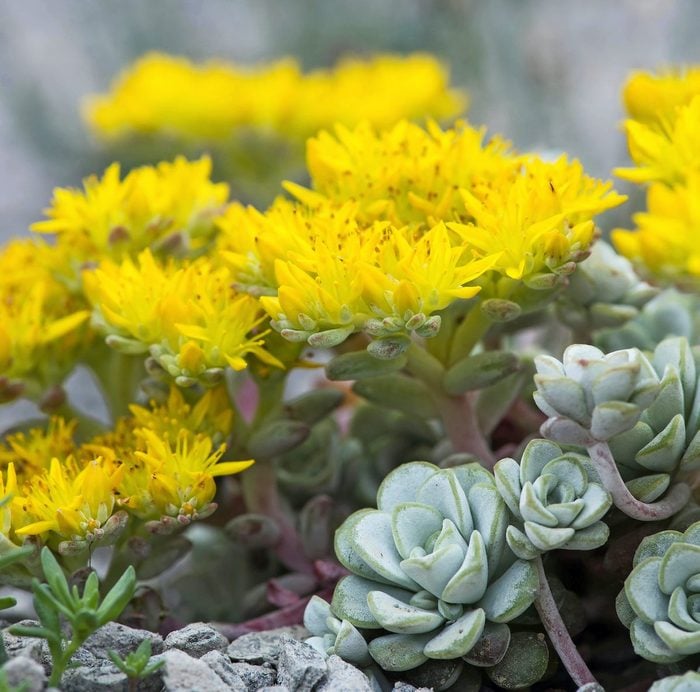
Cape Blanco Stonecrop
Sedum spathulifolium, Zones 5 to 9
Cape Blanco’s luminous, silver-blue foliage lights up any combination in the garden or container arrangements. This is a cultivar of a native stonecrop species, offering up tiny yellow flowers in summer. As a ground cover, it’ll stretch up to 2 feet.
Why we love it: Truly a standout with its coloration, the shimmery leaves can play checkers in a landscape with black mondo grass (Ophiopogon planiscapus ‘Nigrescens’).
Before you plant stonecrop, check out the ultimate sedum plant guide.
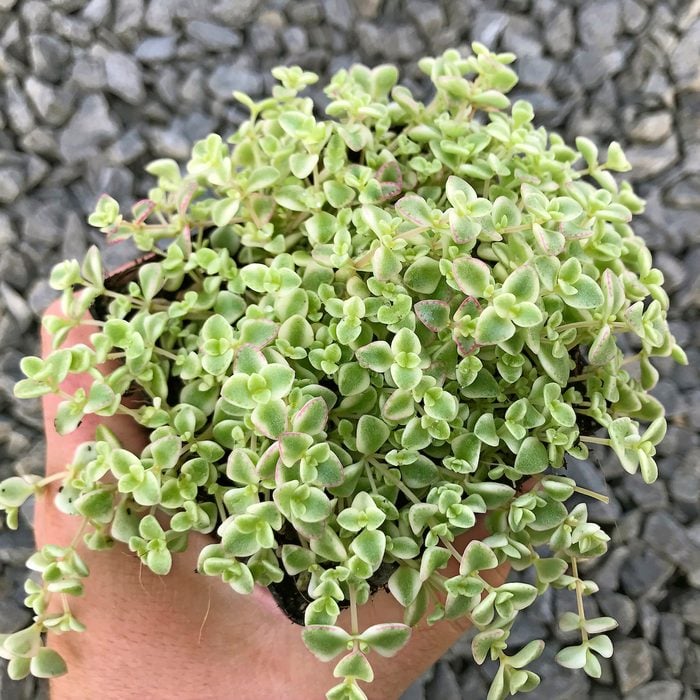
Petite Bicolor Crassula
Crassula, Zones 9 to 11
With the tiniest of leaves, this charming option shines in a mixed container or on its own. Move it indoors in winter and grow as a houseplant where not hardy. Watch for bees and butterflies to stop by in droves during summer and early fall when star-shaped pink flowers appear.
Why we love it: Often referred to as Little Missy sedum, this pick’s leaves are edged in cream and flushed pink.
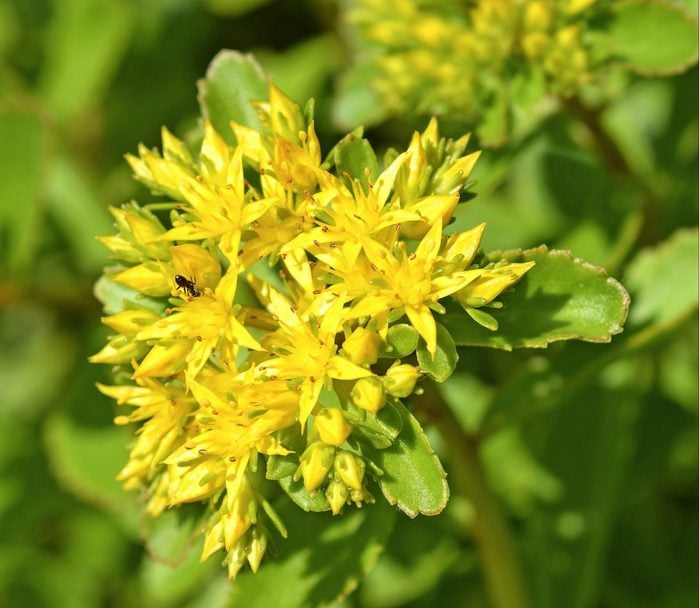
Weihenstephaner Gold Orange Stonecrop
Phedimus kamtschaticum var. floriferum, Zones 3 to 8
This plant sports 6-inch-tall olive green foliage that beautifully complements its pink stems and wildlife friendly yellow flowers. Its trailing habit, up to 16 inches, makes it perfect to use in hanging baskets or as a ground cover. It also tolerates deer and drought.
Why we love it: Abundant blooms appear from June to August, then deliver a bonus of tiny reddish fruit.
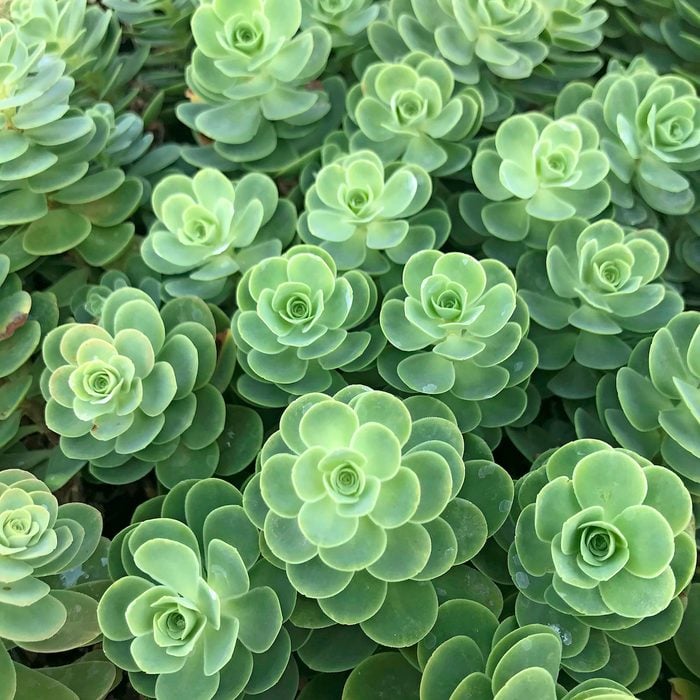
Evergreen Orpine
Hylotelephium anacampseros, Zones 4 to 9
Vertical whorls of bluish-green rosettes add fascination to your rockery, border or containers, creating contrast with smaller-leafed varieties. Reaching up to 10 inches high, this sedum can handle being in poor soil.
Why we love it: The faintly purple flowers are star shaped and popular with pollinators.
Psst—these seriously cool succulents make great houseplants.
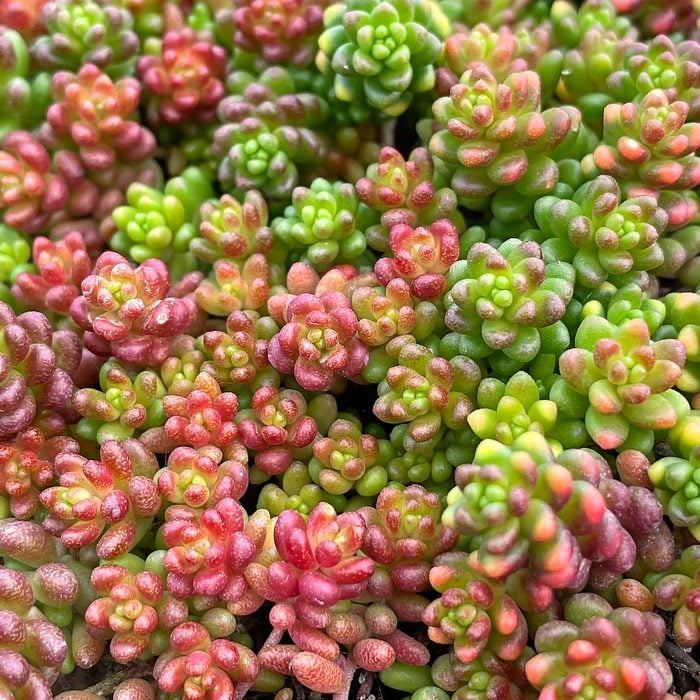
Coral Carpet Sedum
Sedum album, Zones 3 to 9
This ground-hugging chameleon’s coloring first appears as coral, shifts to dark green in summer, and finally blazes crimson in the fall and through the winter. The plant also tolerates light foot traffic, so go ahead and plant between pavers or near pathways.
Why we love it: Already adorable with chubby leaves, the frothy white flowers in summer make it a knockout (and butterflies may visit).
Learn how to grow a succulent container garden.
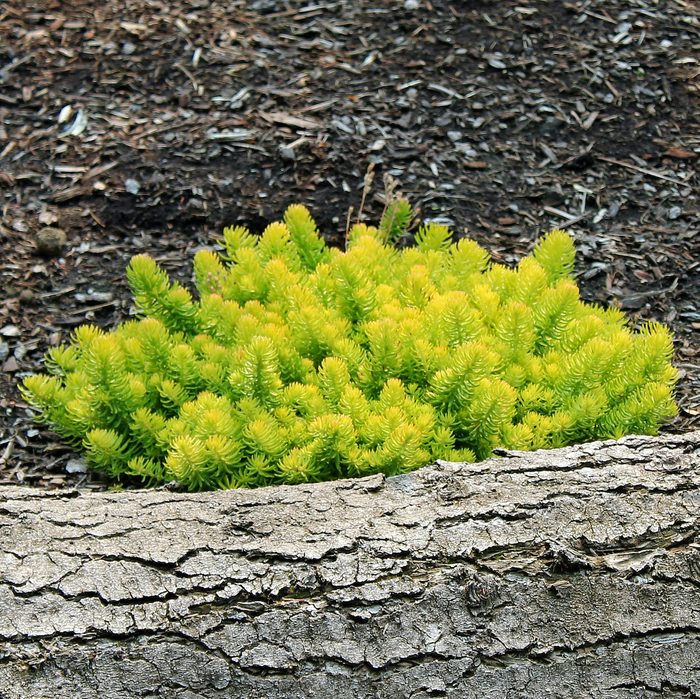
Angelina Creeping Sedum
Sedum rupestre, Zones 5 to 8
A sedum with sprucelike foliage, Angelina quickly makes a dazzling carpet of gold, taking on pumpkin colored highlights just in time for fall. Standing 4 to 6 inches high, it expands to an evergreen mat 1 to 2 feet wide. Grow as a ground cover and companion for sun-loving spring bulbs.
Why we love it: The fine texture adds visual pop to a collection of round-leafed sedums.
Check out the top 10 flashy flowering succulents to grow.
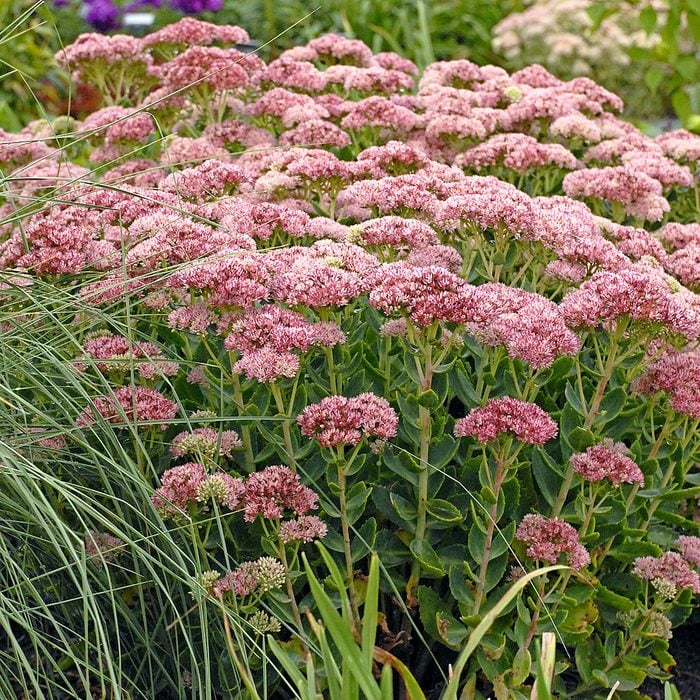
Autumn Fire Sedum
Hylotelephium telephium, Zones 5 to 9
For a bold garden presence, Autumn Fire is an upright, sun-loving, pollinator-friendly choice that fits right in with larger perennials and shrubs in a mixed border. Left over the winter, the flower heads will feed birds while looking striking, especially if catching snow.
Why we love it: This improved form of Autumn Joy blooms longer, with larger, brighter flower heads on a sturdier plant.
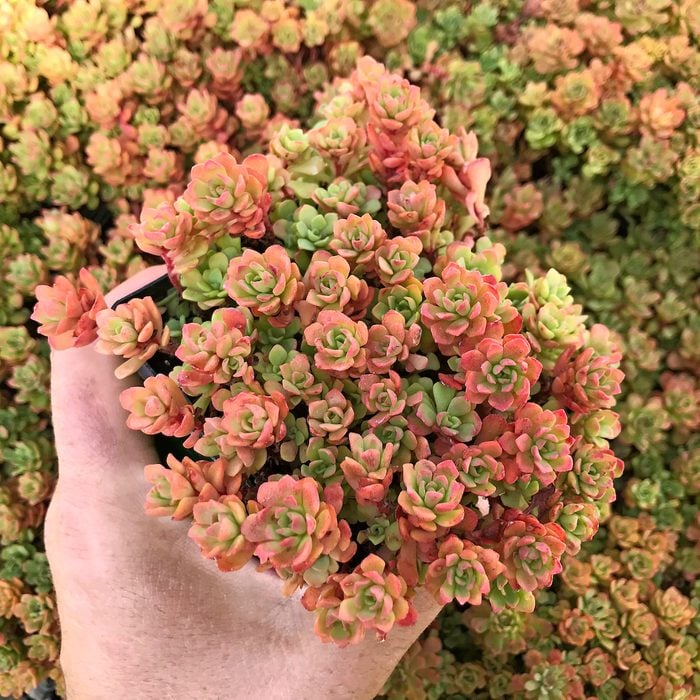
Pink Form Southern Stonecrop
Sedum nevii, Zones 4 to 11
With evergreen foliage that looks like clusters of miniature roses, this plant offers gardeners multiple looks: blue-green at first, then pink in cooler weather. It’ll grow about 1 foot wide.
Why we love it: Butterflies love the pale pink flowers smothering the plants in early summer to midsummer.
We found more perfectly pink succulents for your home.
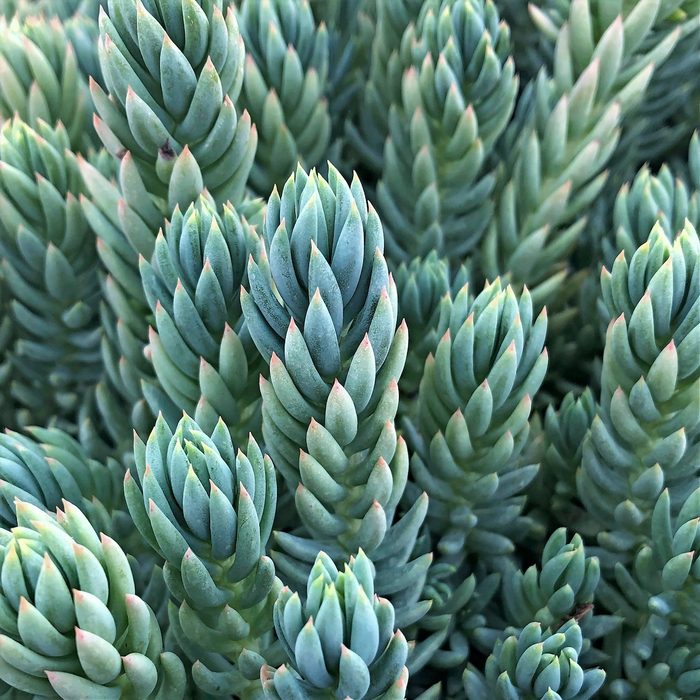
Spanish Blue Select Stonecrop
Sedum reflexum, Zones 4 to 9
This mat-former has vertical, textural blue stems mimicking conifer needles. A strong grower, it’ll mass about 18 inches wide and 6 inches high, either in the ground or spilling from a container.
Why we love it: The blue-toned foliage can resemble a Colorado blue spruce.
Learn how to propagate succulents (for more free plants!)
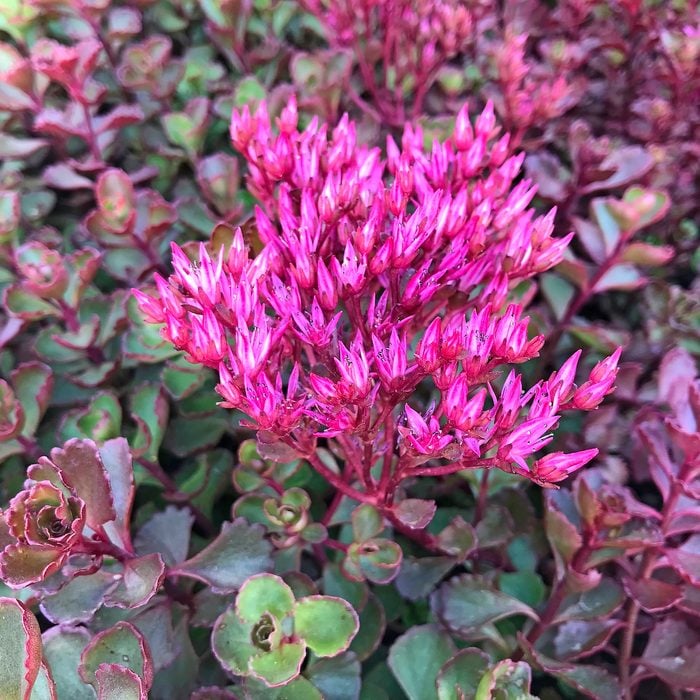
Voodoo Stonecrop
Phedimus spurium, Zones 3 to 9
Add depth and drama to your garden with this easygoing sedum pick. Covering up to 2 feet in width, this trailing, adaptable plant holds its strong burgundy color all year. Bees and butterflies visit the vivid magenta flowers during summer.
Why we love it: You’ll fall for Voodoo’s year-round swath of drought-tolerant, saturated color.
Backyard Tip: If you find a sedum with Hylotelephium or Phedimus in the botanical name, that’s not an error. A number of plants previously classified under the Sedum genus were split off, though they’re still commonly referred to as sedums.
